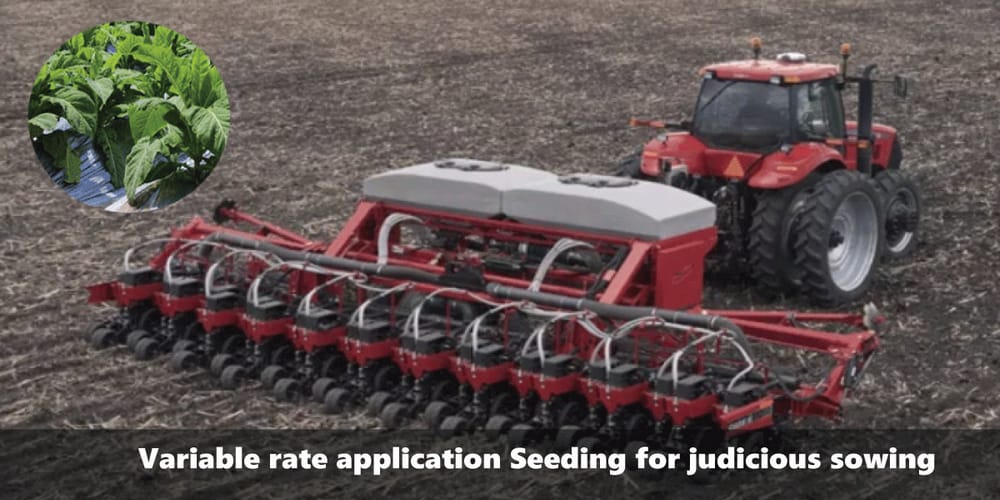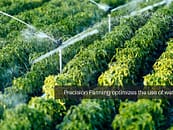Judicious Seed Sowing
VRA or variable-rate application is a method of applying varying rates of inputs in appropriate areas throughout farmland. The objective of Variable rate application is to ensure maximum profits to its fullest potential, with more efficient input application, and ensure sustainability and environmental safety. Variable rate application enhances the economic return by strategically optimizing inputs like seeds, fertilisers, pesticides, weedicides etc. Variable rate application has made it possible for the farmers to focus on high productivity areas and save cost by controlling inputs in lower productivity zones or the zones where previous management has resulted in a situation for reduced input need.
Seeds add to a major portion of input cost in agriculture. To save the unnecessary input cost without compromising with the quantity and quality of output, it’s imperative to focus on cost cutting measures in seed application. Variable rate application is one of the ways to achieve this. Conventional planters and drills can be converted into Variable rate application seeders by adjusting the seed metering drive. As a result of this modified sowing, plant population would change effectively on the farmland.
Variable rate application seeding is achieved by separating or disconnecting the planter’s seed-meter systems from the ground drive wheel. A motor or gear box is attached to change the speed of the ground wheel input to vary the seeding rate on the go. These devices can also be matched with a prescription map and can have two or more rates of seeding. Example, a two rate system can be used to reduce the seeding rate in the areas outside the reach of the centre pivot irrigation system. Multiple rates might find application where adjustments are to be made depending on soil type, its water holding capacity and organic matter availability.
A commercial Variable rate application seeder consists of more sophisticated parts like hydraulic drive unit, processor, and ground speed sensor. The hydraulic motor is powered by tractor hydraulics and is attached to an electric stepper motor to control the speed delivered to the seed-meter shaft. The controller after receiving the ground speed signal coordinates the speed with the planter width and seeding rate to send signal to hydraulic drive. Some planters also come with a feature to synchronize seeding rates with the rate of application of fertilizer, herbicides, or insecticide units.
Economic Advantages of Variable rate application (VRA) :
- Savings on fertilizers and chemicals: According to a study conducted by the University of Illinois, the farmers can save about 5 US Dollars per acre due to a Variable rate application technology for nitrogen fertilization.
- Increase in Potential yield: Yield per acre can be increased drastically due to more efficient fertilization and spraying based on actual crop needs and variability of fields.
- Environmental protection: With organic farming gaining more popularity than ever, Variable rate application helps in preventing crops from excess fertilization or spraying of chemicals.
FocusAgritech’s Outlook on VRA
Variable rate application seeding tools have proven to be a great utility in terms of cost saving by optimizing the quantity of seeds and also replacing manual labour for sowing. However, this tool has not been scaled for masses due to lack of awareness. This technology is an integral part of precision farming techniques and would surely see mass adoption in coming years. It’s advisable for companies to develop and upgrade the technology around Variable rate application seeding and integrate it with existing systems for real-time monitoring, soil sampling, and weather indexing etc. The data collected from Variable rate application seeding methods would also help refine planting recommendations for future years.
Recent Article
Agricultural Market Deregulation in India







